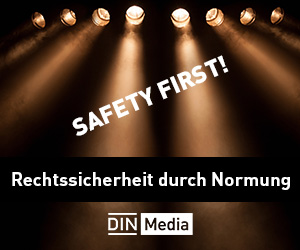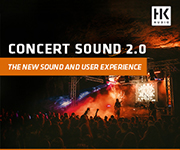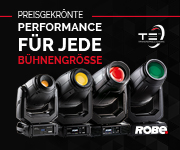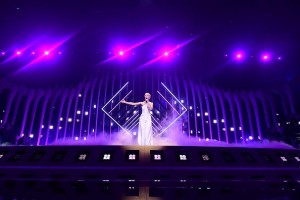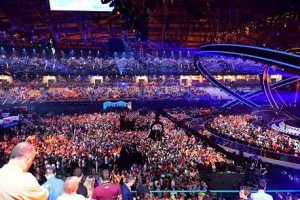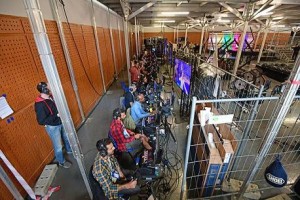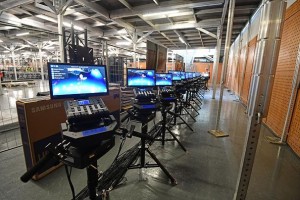Aktuelle News & Schlagzeilen
Large Robe RoboSpot system used for Eurovision 2018
Seventeen Robe RoboSpot Base Stations controlling tracking Robe BMFL fixtures provided a comprehensive remote follow spotting solution for production lighting designer Jerry Appelt at the 2018 Eurovision Song Contest. The annual singing event was this year staged at the Altice Arena in Lisbon, Portugal.
The RoboSpot system was specified onto the show by Jerry Appelt and his gaffer Matthias Rau, and used throughout the event’s final and two live semi-finals, which were beamed and streamed live via host broadcaster Rádio e Televisão de Portugal (RTP), reaching a final worldwide audience of around 200 million.
The RoboSpot system was supplied by main lighting contractor Flashlight from the Netherlands, who worked in conjunction with Pixelight from Portugal. The RoboSpots, each with individual MotionCameras, were all from Robe’s BMFL series of moving lights - a mix of BMFL Blades and BMFL WashBeams.
They were positioned around a variety of overhead vantage points which meant Jerry Appelt was not restricted to using one set of follow spots in a specific location/direction to highlight every performer in every shot. Songs from 43 countries had to be lit individually.
BMFL Blade luminaires were rigged to one of the front trusses with two more single fixtures on side trusses left and right of the stage. BMFL Blades with one MotionCamera per pair of fixtures were positioned on an upstage truss and used for rear following, highlighting and silhouetting. Two more single BMFL WashBeams were rigged on trusses right at the far end of the arena and used for long throw shots and presenter pick-ups.
Another two paired sets - a BMFL WashBeam and a BMFL Blade running with one MotionCamera each - were located over the stage and used for spotting people, interviews and other activities happening in the Green Room which was set up at the end of the arena furthest from the stage. The 17 x RoboSpot Base Stations were all located in a designated backstage area, so the operators had no direct view of the stage.
Robe Deutschland’s Martin Opitz was the RoboSpot systems engineer and co-ordinated the training and technical support. His first task on arrival in Lisbon a few weeks ahead of the final was to train up 17 locally based operators to work the RoboSpots. Opitz collaborated closely with the production’s follow spot caller Torsten “Icke” Berger and keylight operator Markus Ruhnke.
The set for ESC 2018 comprised a series of interlinking geometric curves and spheres accentuated with different LED sources providing a universal architecture which was designed by Florian Wieder. Jerry Appelt worked alongside his own FOH team including assistant LD Andreas Türpe and - in addition to Matthias Rau, Torsten Berger and Markus Ruhnke - MA3D operator Jan Suiling, audience lighting operator Raphael “Grebi" Grebenstein and show lighting operator Raphael Demonthy.
Sebastian “Huwi” Huwig operated the back-wall of LED Panels while Nick "Nick the Greek" Charalampidis looked after media server operation for all the delegation’s video content. The multicamera directors from RTP were Paula Macedo and Pedro Miguel Martins and they worked alongside Troels Lund as senior multicamera director for the production.
(Photos: Joan Lyman)
SCHLAGZEILEN
news archiv
suche
© 1999 - 2025 Entertainment Technology Press Limited News Stories

